Three
CHURCHES
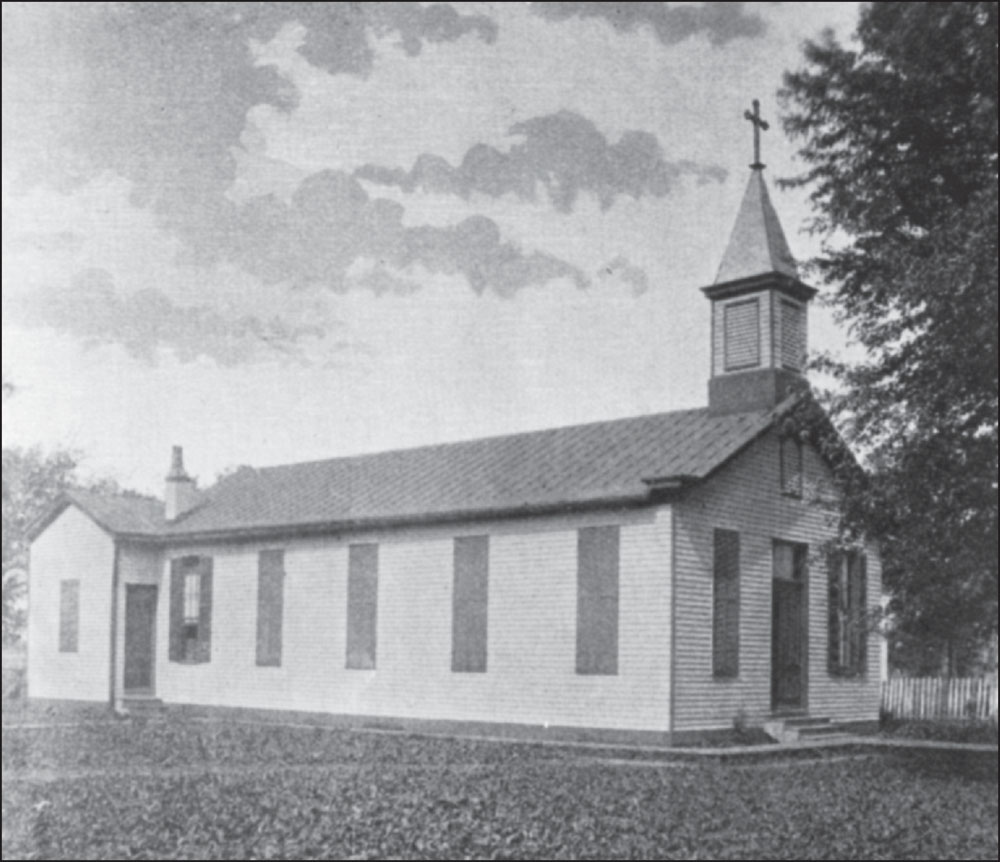
FIRST HOLY TRINITY CATHOLIC CHURCH. In 1882, Bishop William George McCloskey purchased land and a house in St. Matthews for $7,500. Holy Trinity Catholic Church and school, with Fr. Louis C. Ohle as pastor, thus began on what is now St. Matthews Avenue. This was one of the first suburban parishes in Louisville. (AOL.)
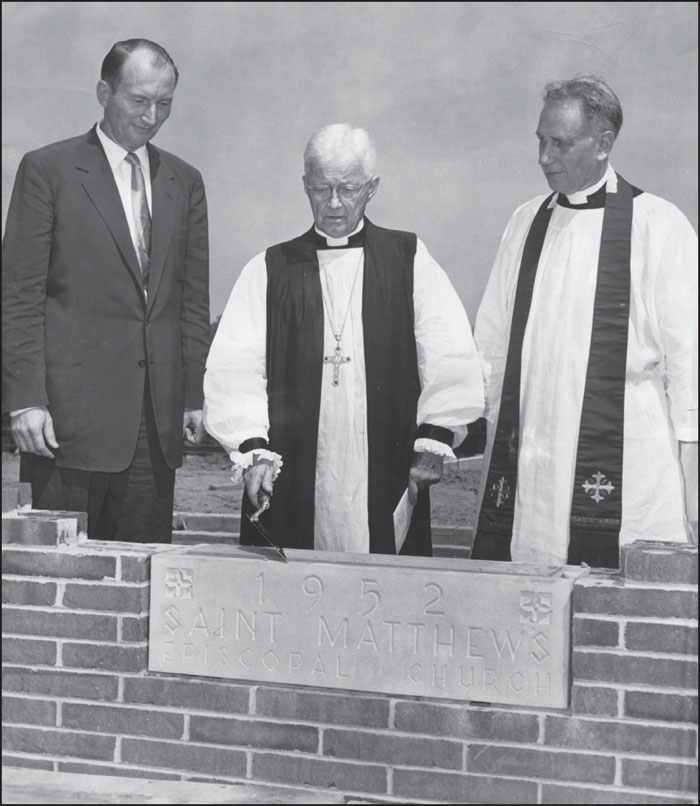
ST. MATTHEW’S EPISCOPAL CHURCH DEDICATION, JUNE 21, 1952. From left to right, Henry Scheirich, Bishop Charles Clingman, and Rev. Bill Myll lay the cornerstone for the new St. Matthews Episcopal Church on Hubbards Lane in 1952. The first service was held in the new sanctuary (now Clingman Chapel and the Rehearsal Hall) on February 8, 1953. (STMEC.)

ST. MATTHEW’S EPISCOPAL CHURCH REORGANIZED, 1948. The original St. Matthews Episcopal Church began in 1839 and gave its name to the community in 1850. The church never recovered from a fire in 1858 but struggled on until 1913, as most members moved to St. Mark’s in Crescent Hill. In 1948, with the population growing in the area, the Episcopal diocese began a new mission in the community. Sunday worship was held at the St. Matthews Women’s Club until the sanctuary was built in 1952. (STMEC.)
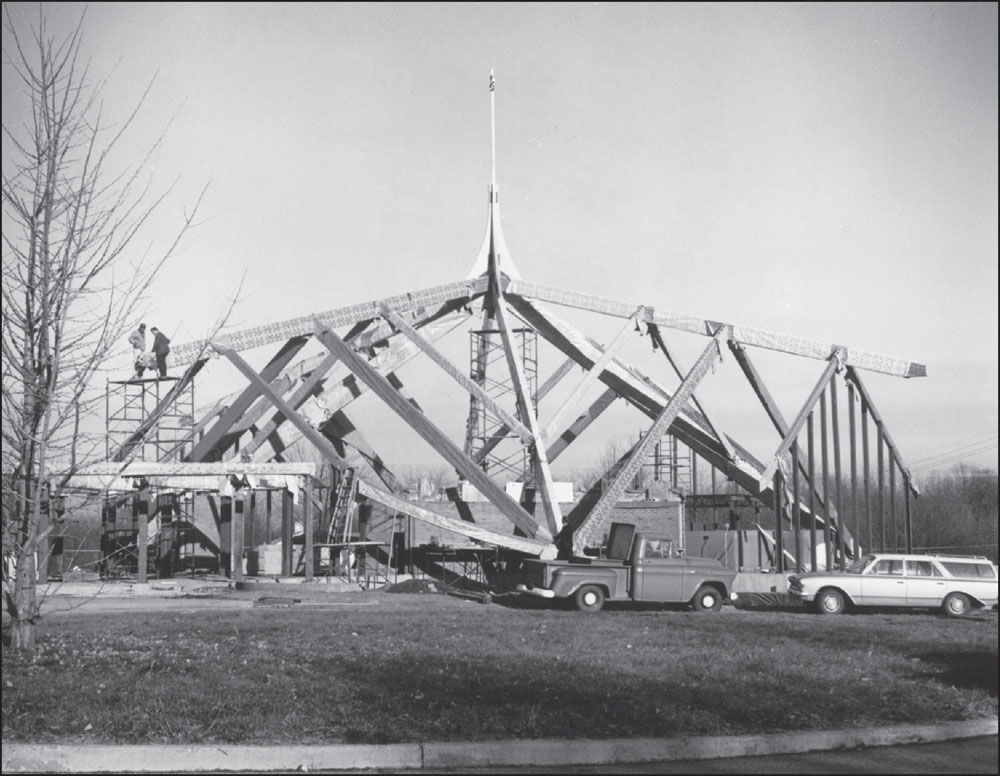
ST. MATTHEW’S EPISCOPAL CHURCH UNDER CONSTRUCTION, 1964. The distinctive design of the new church was considered quite avant-garde. It was meant to reflect a tent-like roof seen in early Christian gathering places. The design was open to God’s world outside the church and provided a space for the community to worship in the round. (STMEC.)

EARLY REGISTRY OF BEARGRASS CHRISTIAN CHURCH. The membership at Beargrass in the 1860s church registry contains many of the pioneers of St. Matthews. Family names such as Herr, Arterburn, Cannon, Gilman, Hubbard, and Rudy are still familiar in the area. (BGCC.)
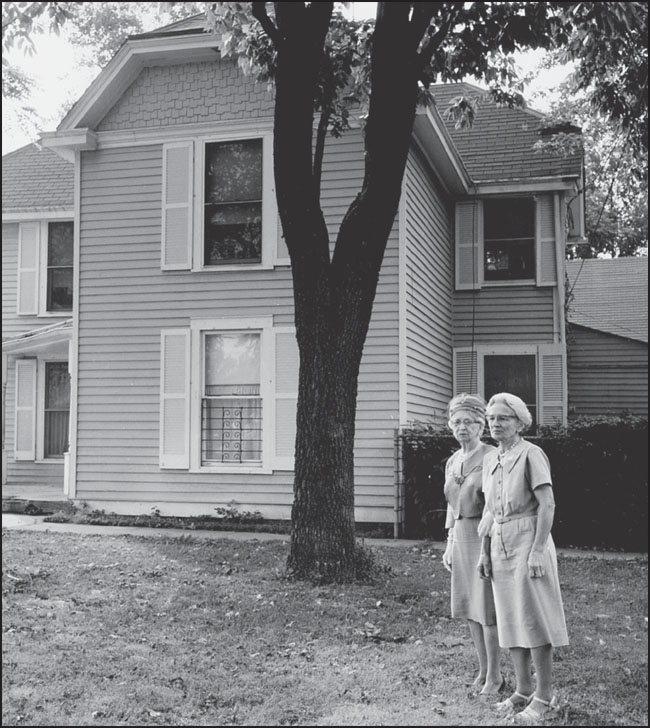
BEARGRASS CHRISTIAN CHURCH, FIRST PARSONAGE. Winnie Mae Dick (left) and Lois Akers, who had attended Beargrass since it was on Westport Road, stand in front of the first parsonage near the early church. Rev. Frederick W. O’Malley, a native of Canada, built the home himself in 1902. (BGCC.)
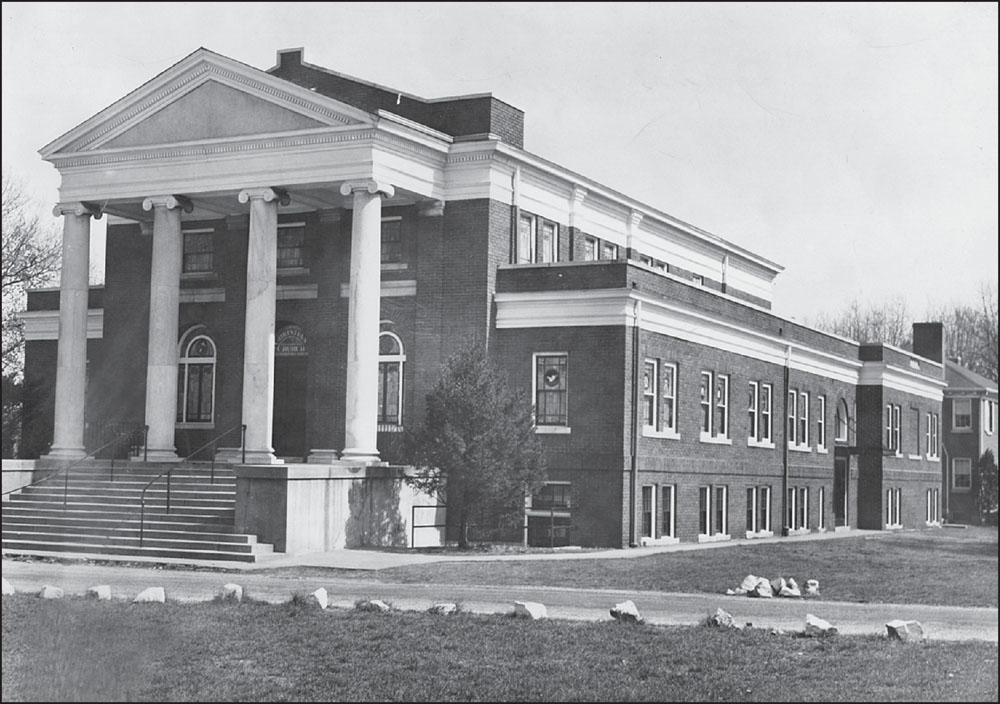
BEARGRASS CHRISTIAN CHURCH, 1939. Beargrass Christian’s original church moved from Westport Road near St. Matthews Avenue to its present site in 1917. It took many years of planning, purchasing, and selling other sites, such as one on Fairfax Avenue at Shelbyville Road, before the Shelbyville Road and Browns Lane sanctuary could be built. (BGCC.)
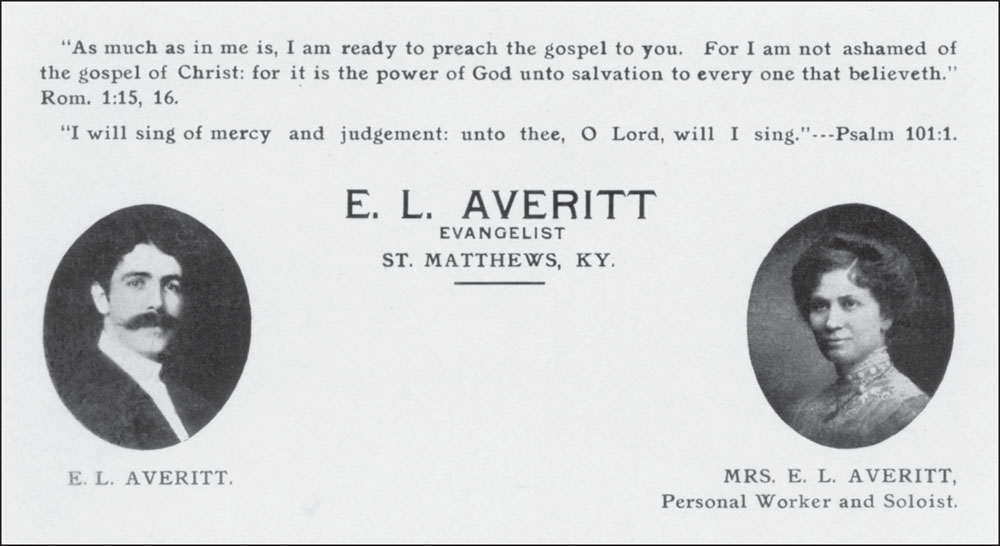
ADVERTISEMENT FOR EVANGELIST E. L. AVERITT. Ervin Averitt (1884–1974) and his wife, Blanche E. (Wyatt) Averitt (1884–1975), were Baptist evangelists who lived and preached in Louisville for a number of years after World War I. Ervin published a hymn, “I Am Saved,” in 1912 and served as a chaplain with the 112th Infantry of the American Expeditionary Forces in the war, while Blanche did church work in Portsmouth, Ohio. (BGSTMHS.)

HOLY TRINITY CELEBRATES FATHER BESINGER’S SILVER JUBILEE, 1927. From its founding in 1882 until 1925, Holy Trinity Church in St. Matthews was served by priests who belonged to the diocese of Louisville. In 1925, Fr. Bartholomew F. Besinger, CPPS (Congregation of the Precious Blood), became pastor and served until 1938. The parish thrived under his leadership, and the community knew him as open to ecumenism by meeting with the Protestant ministers in the community. His photograph hangs in the Zachary Taylor American Legion Post on Shelbyville Road. (Ellen Kaelin Venhoff.)

HOLY TRINITY CATHOLIC CHURCH FIRST COMMUNION CLASS. First Communion celebrations are a great parish event, as evidenced by this early-1920s class at Holy Trinity Church. After their First Communion, the girls became members of the Young Ladies’ Sodality, wore a medal, and received Communion monthly as a group. (Holy Trinity Church.)
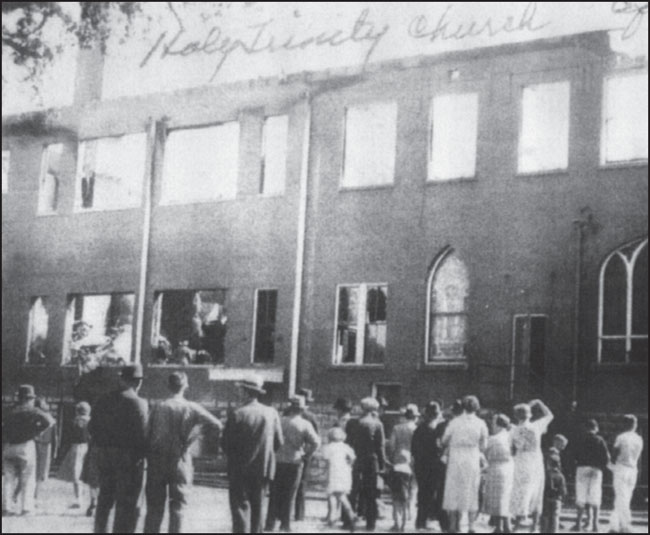
HOLY TRINITY CATHOLIC CHURCH FIRE, 1937. One of many church fires in the St. Matthews area devastated Holy Trinity church and school in 1937. Most of these fires were the work of arsonists. This one was found to be started by the son of the chief of volunteer firefighters. Sunday services were held in the gym, and Bethel United Church across Shelbyville Road offered its facility for classroom space while the building was being reconstructed. It was back in use by 1938. (Holy Trinity Church.)
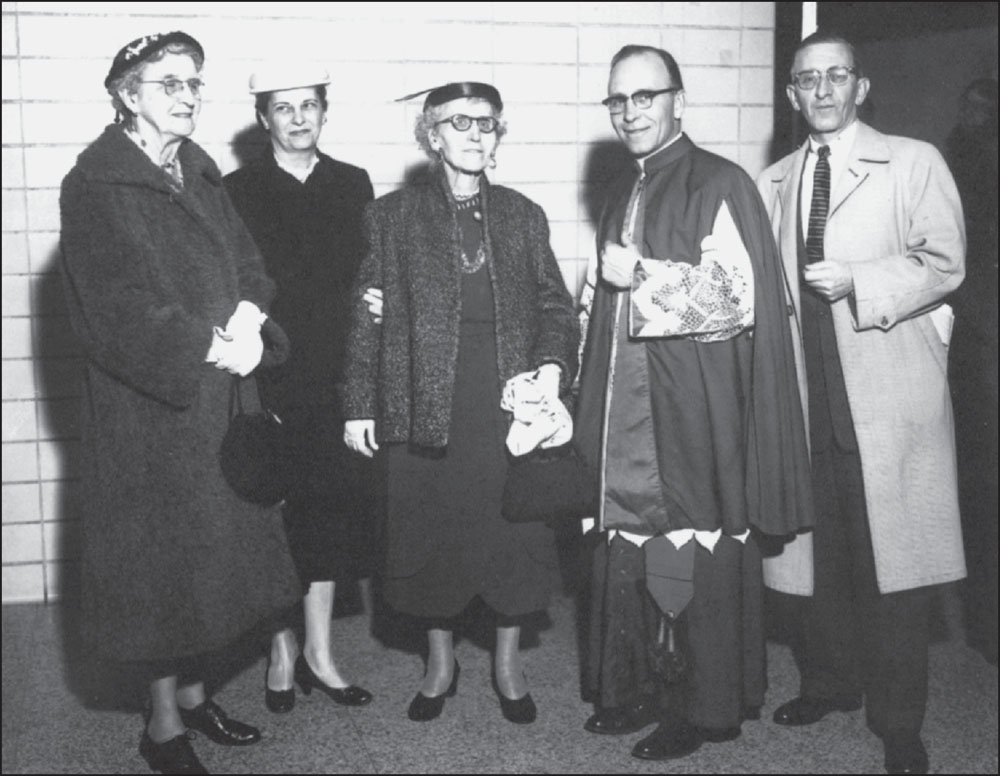
FR. ANTHONY GERST CELEBRATES ELEVATION TO MONSIGNOR. Fr. Anthony Gerst, pastor of Holy Trinity Church and founding pastor of Our Lady of Lourdes, celebrates his elevation to monsignor with his family in August 1949. Family members are, from left to right, Clara Gerst (aunt), Elizabeth Gerst (sister-in-law), Lula Gerst (aunt), Monsignor Gerst, and Walter Gerst (brother). Gerst seldom used the title, preferring to be addressed simply as Father Gerst. (OLOL.)
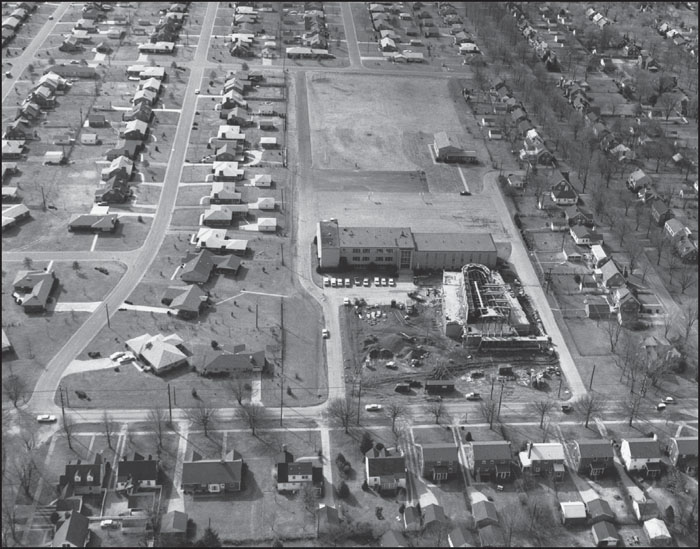
OUR LADY OF LOURDES CATHOLIC CHURCH. In the 1960s, Our Lady of Lourdes Church began construction of its present building. The original church structure, built in 1951, was attached to the school building, and when the new church was finished, it became a gym for the parish and school. (OLOL.)
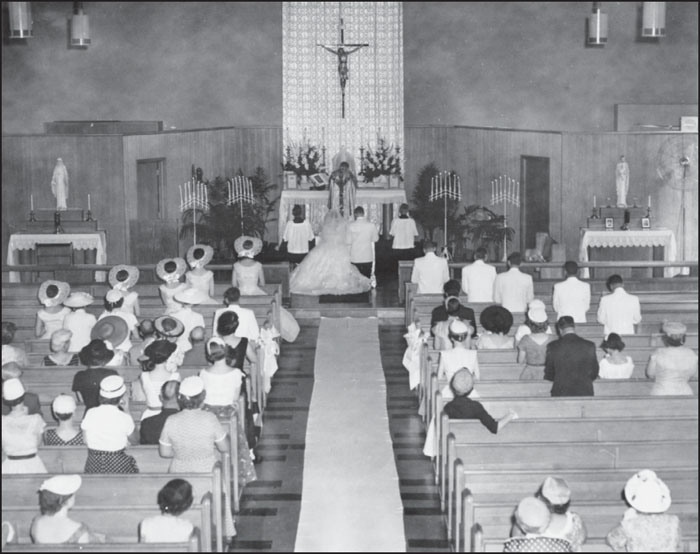
FIRST WEDDING AT OUR LADY OF LOURDES, JANUARY 13, 1951. Bill Steedly and Rita Roppell were the first in a long line of weddings at Our Lady of Lourdes. They remained members of the parish throughout their married life. Bill died several years ago, but Rita Steedly is still a member. (OLOL.)
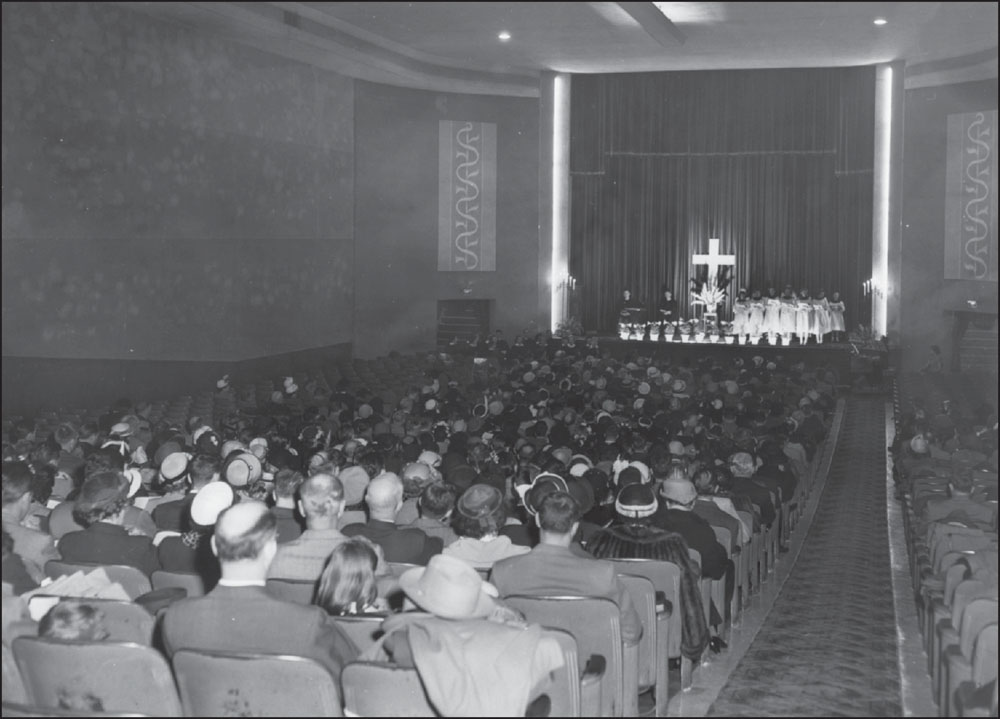
HARVEY BROWNE PRESBYTERIAN CHURCH EASTER SERVICE AT THE VOGUE THEATER. Since they had outgrown their original church and the new church was not complete, the Harvey Browne Presbyterian congregation used the Vogue Theater for Sunday services such as this Easter service in 1951. (HBPC.)
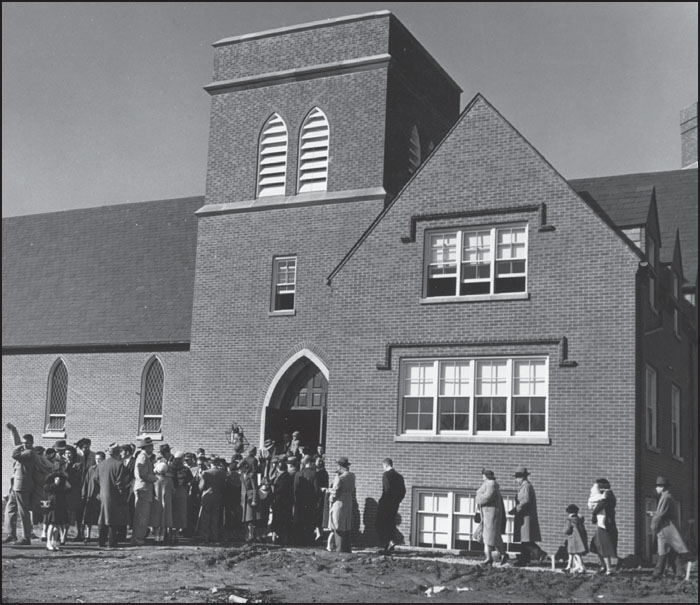
HARVEY BROWNE PRESBYTERIAN CHURCH, 1952. The Harvey Browne congregation assembled for the first Sunday service in their new church on January 20, 1952. In the 1920s and 1930s, several possible locations for a larger church were considered and even purchased. In the mid-1940s, church member Tony Eline and his sons Bud and Sidney contributed several thousand dollars for the purchase of land on Browns Lane. Zoning problems and parking needs delayed the building program until 1950. (HBPC.)
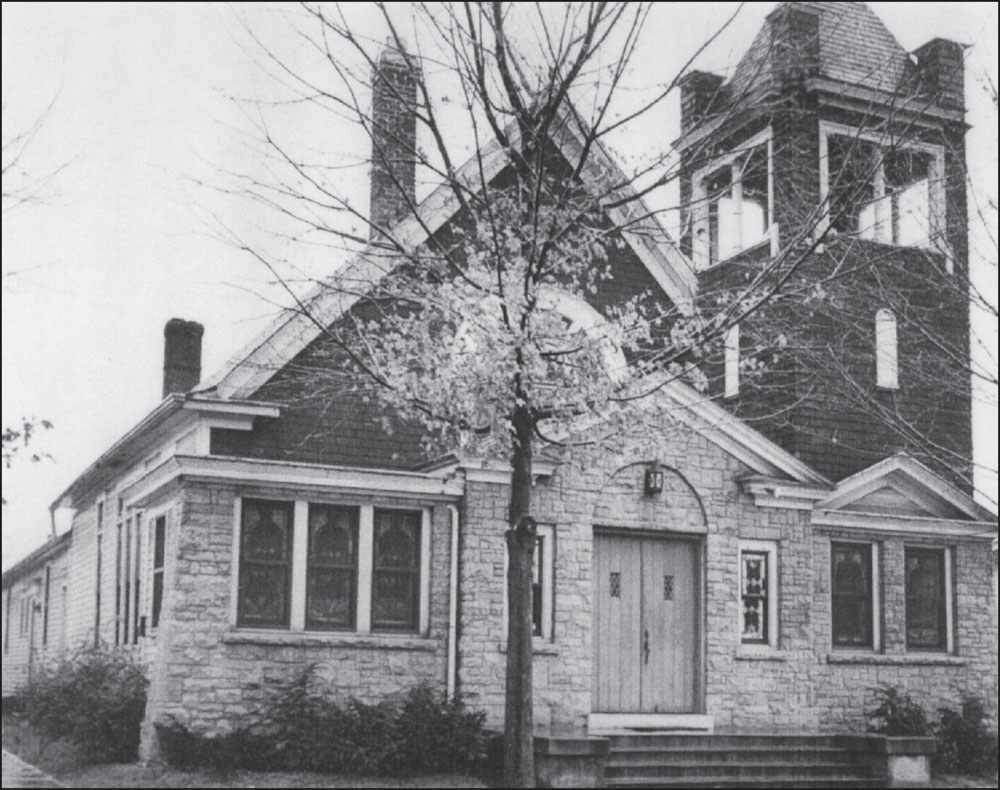
FIRST HARVEY BROWNE PRESBYTERIAN CHURCH. While it was a mission church, the Harvey Browne congregation met at Greathouse School, as so many St. Matthews churches did. The first church was on Bauer Avenue in a building that still stands and houses various offices. (HBPC.)
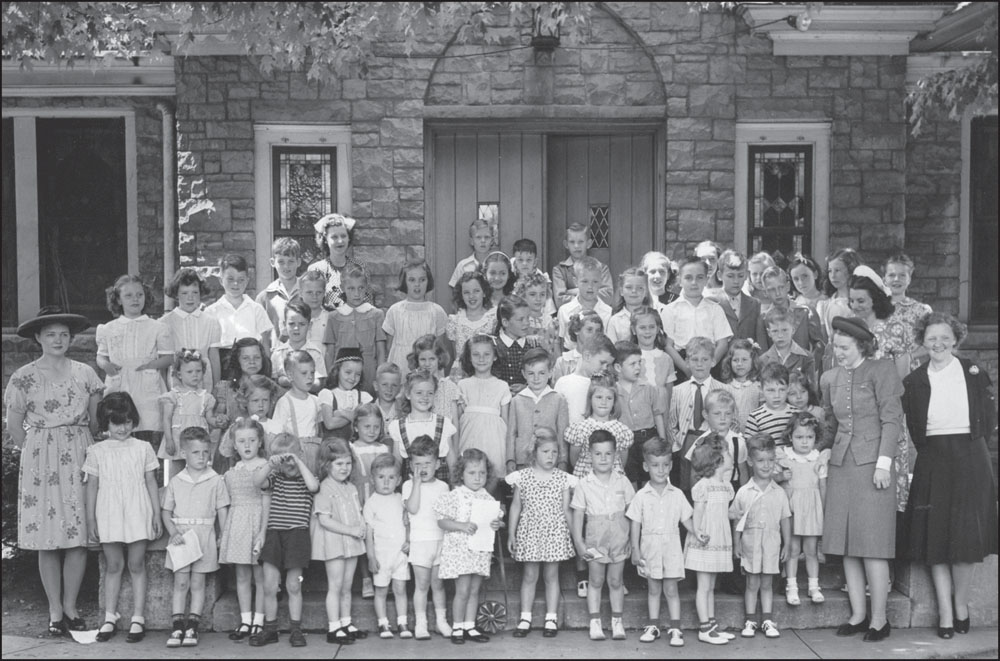
HARVEY BROWNE PRESBYTERIAN CHURCH. Harvey Browne Presbyterian Church in St. Matthews began in 1891 as a mission Sunday school by a group of young people from Crescent Hill Presbyterian. Young families have been the backbone of the congregation from the beginning. (HBPC.)
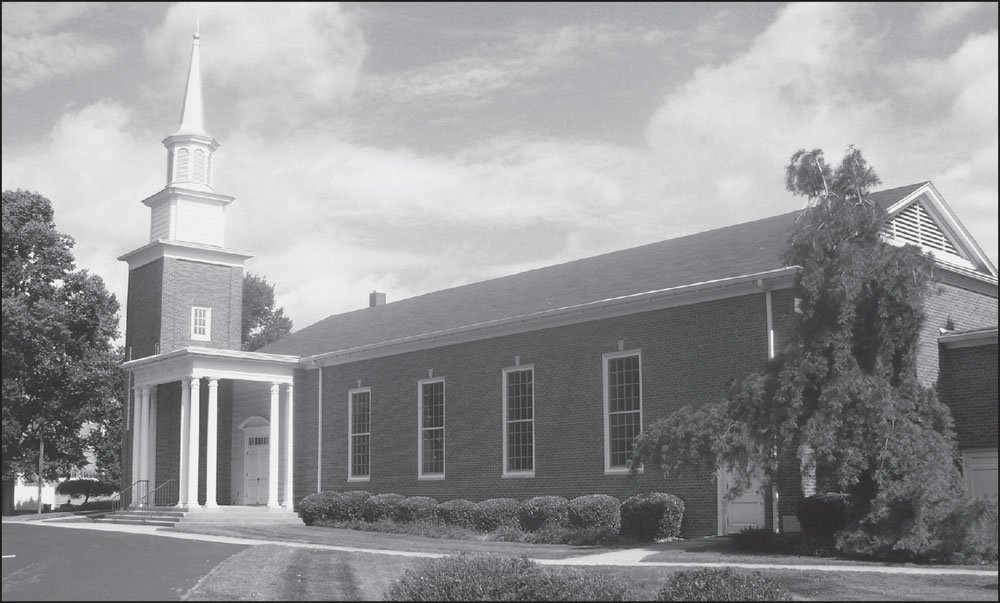
SECOND CHURCH OF CHRIST, SCIENTIST. In June 1916, Louisville’s Second Church of Christ, Scientist was formed and first met at the Elks hall on West Walnut Street, now Muhammad Ali Boulevard. The land on Shelbyville Road was purchased in August 1952, and services were held from September 1954 until January 1957 at the Crescent Hill Woman’s Club while the building on the St. Matthews land was constructed. (Authors’ collection.)
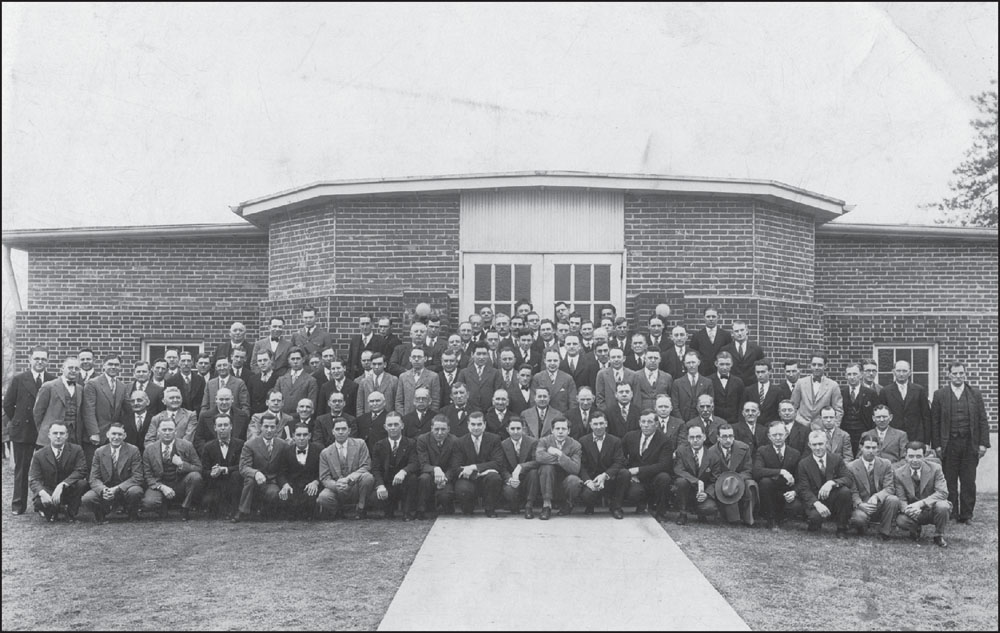
BETHEL CHURCH FARMERS. It was a busy spring in 1924 when many members who were farmers pitched in to excavate the foundation of Bethel United Church of Christ’s new building. This large group brought their horses and teams, picks, and shovels for several weeks of digging. The cornerstone was laid on August 17, 1924, and the church was dedicated on November 23 of that year. (Bethel-St. Paul Church.)
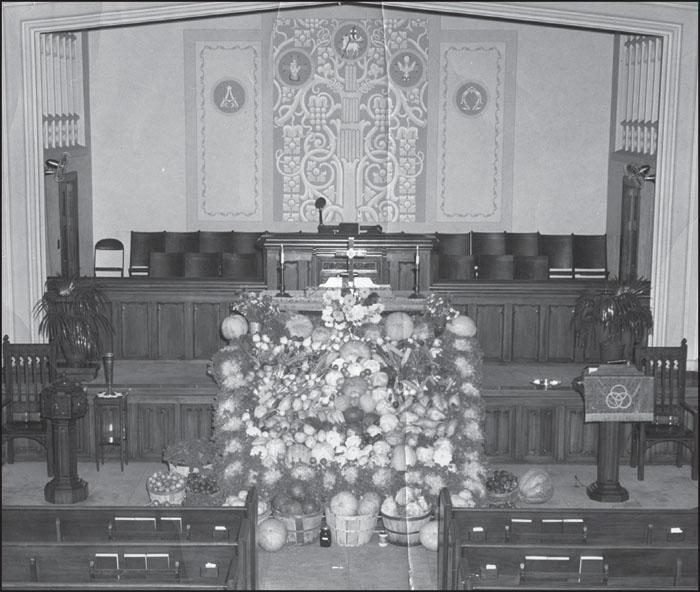
BETHEL CHURCH HARVEST CELEBRATION. In the 1920s, there were harvest celebrations at most churches since St. Matthews was primarily a farming community. The farmers who had dug the foundation at Bethel brought their harvests to church for a harvest celebration in 1925. (Bethel-St. Paul Church.)
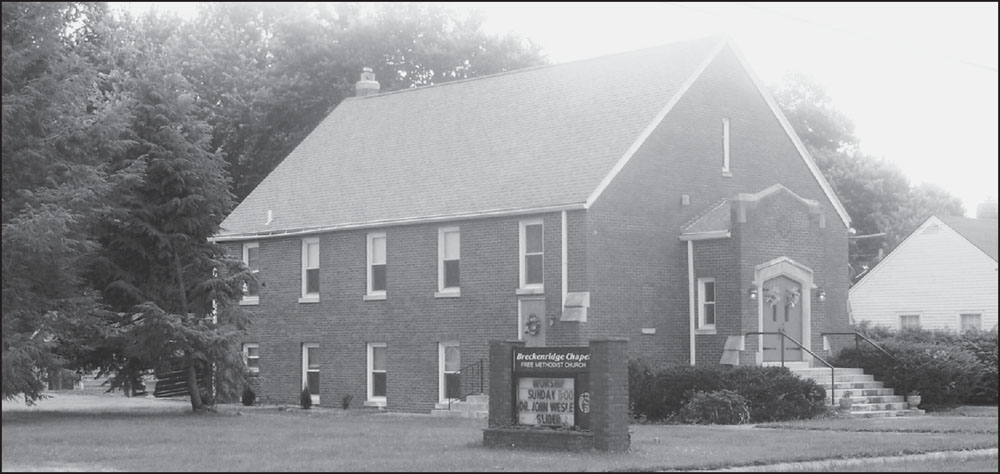
BRECKENRIDGE CHAPEL. St. Matthews Methodist built a church on Breckenridge Lane and Grandview Avenue in 1939 and worshipped there until 1947, when, needing more space, the congregation sold it to St. John Lutheran Church. The Lutherans, too, eventually needed more space, and when zoning regulations precluded expansion, they bought property at 901 Breckenridge Lane and built their present church in 1957. Since then, the chapel has been a Free Methodist church. (Authors’ collection.)
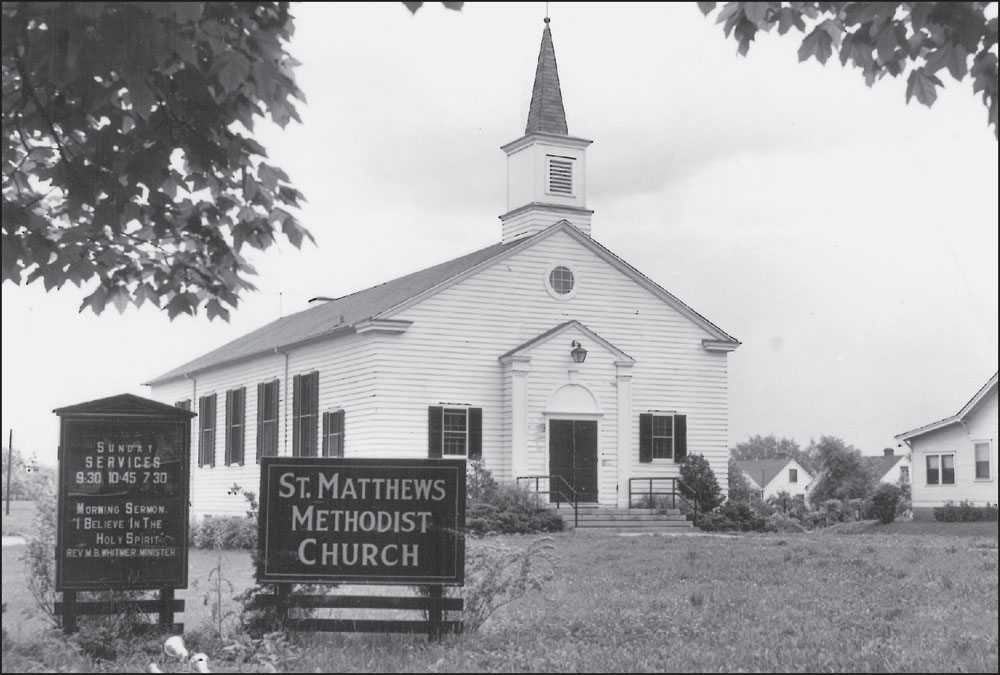
ST. MATTHEWS UNITED METHODIST CHURCH. The original Browns Lane St. Matthews United Methodist Church was moved from Bowman field in 1948. During World War II, and for some time thereafter, Bowman Field had quite a lot of military housing. There were some miscalculations, and the building was too wide for the stone entrance way at Hycliffe Boulevard and Breckenridge Lane. Trees were removed, and the entrance way was taken down and rebuilt. (St. Matthews Methodist Church.)
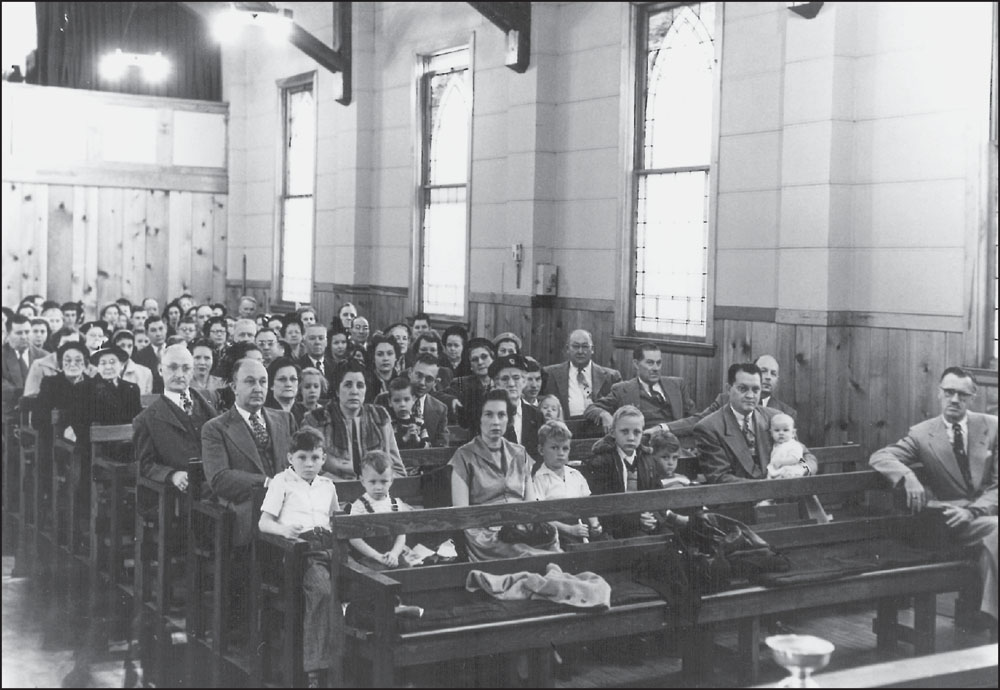
ST. MATTHEWS UNITED METHODIST CHURCH AT WORSHIP, 1945. From the earliest years, St. Matthews Methodist has had a growing congregation. The church growth eventually necessitated moving into its third and present sanctuary. (St. Matthews Methodist Church.)
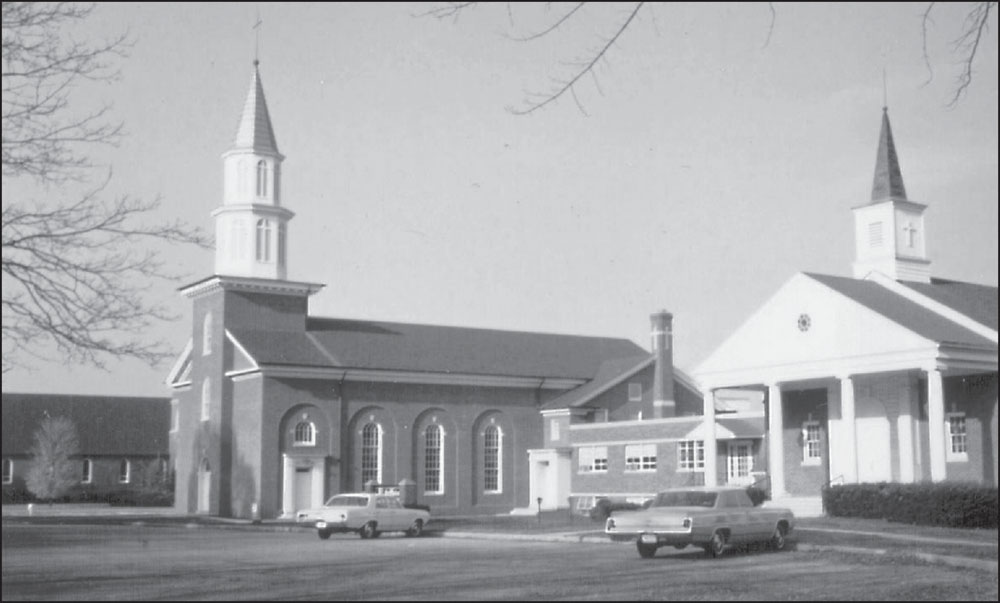
ST. MATTHEWS UNITED METHODIST CHURCH. St. Matthews Methodist’s first church was at the corner of Breckenridge Lane and Grandview Avenue, in the building that is now the Breckenridge Chapel. They moved to their present location on Browns Lane, outgrew their original church there, and moved to a new larger sanctuary on Palm Sunday in 1963. (St. Matthews Methodist Church.)
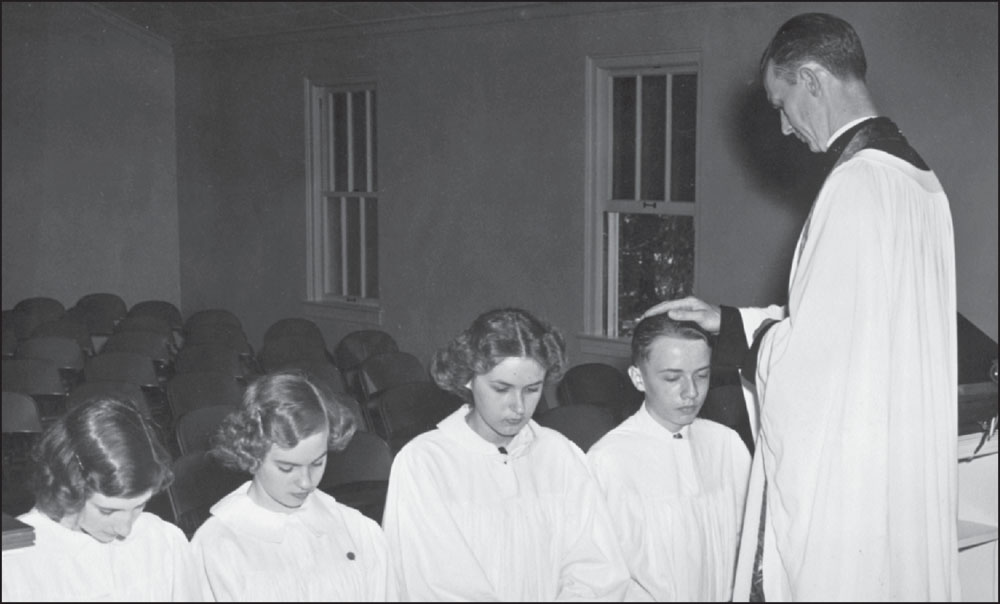
FIRST CONFIRMATION AT ST. JOHN LUTHERAN, 1949. Rev. Samuel P. Diehl Jr., the first pastor of St. John Lutheran Church on Breckenridge Lane, celebrates the church’s first confirmation with, from left to right, Anne Quick, Sherrill Gordon, Beverly Seidel, and Norris Marchant. (SJL.)
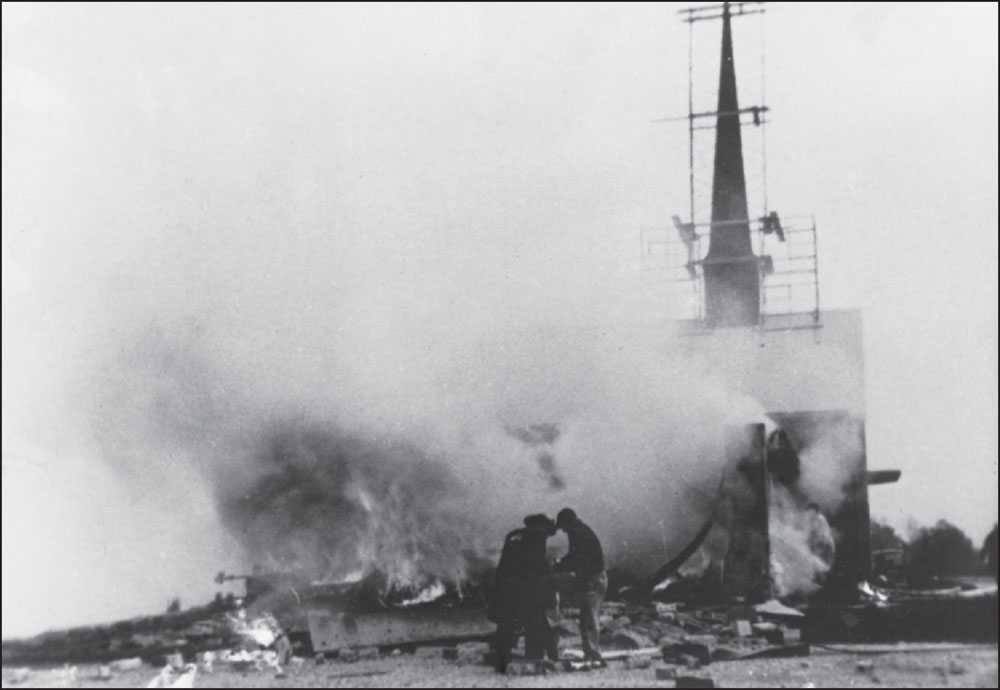
FIRE AT UNCOMPLETED ST. JOHN LUTHERAN, 1957. On October 21, 1957, a gas leak ignited, causing an explosion and fire at the nearly completed church. One wing was demolished, and the main structure was damaged extensively. The church was eventually rebuilt and dedicated on February 9, 1958. (BGSTMHS.)


























